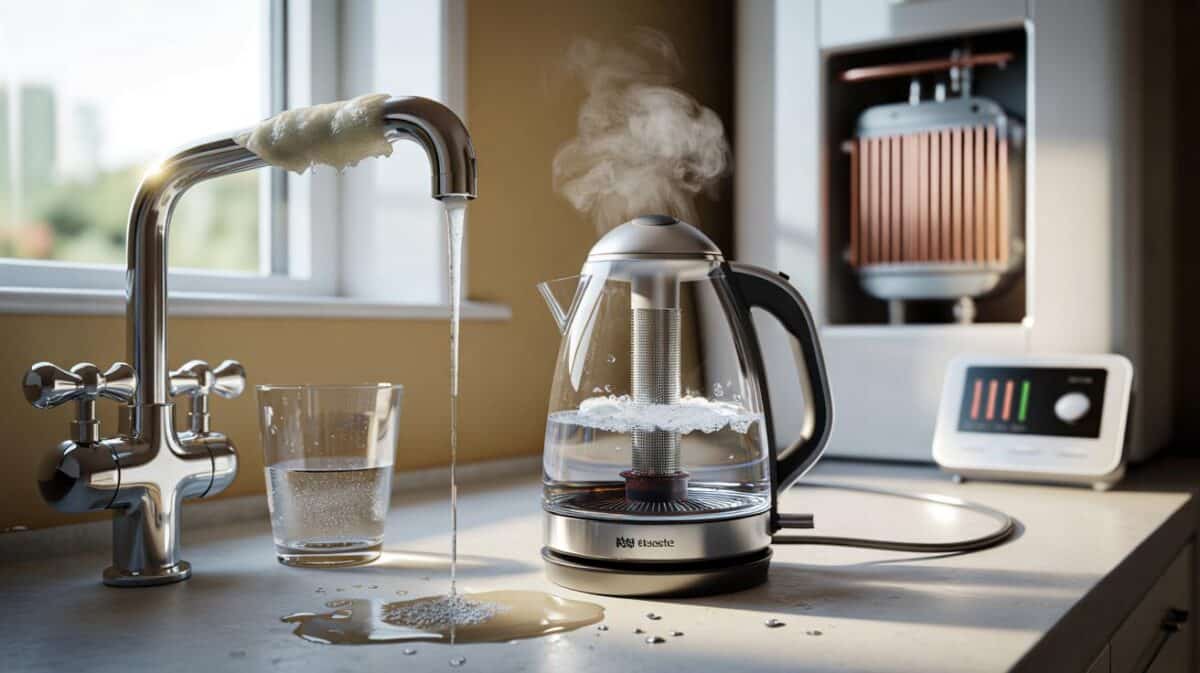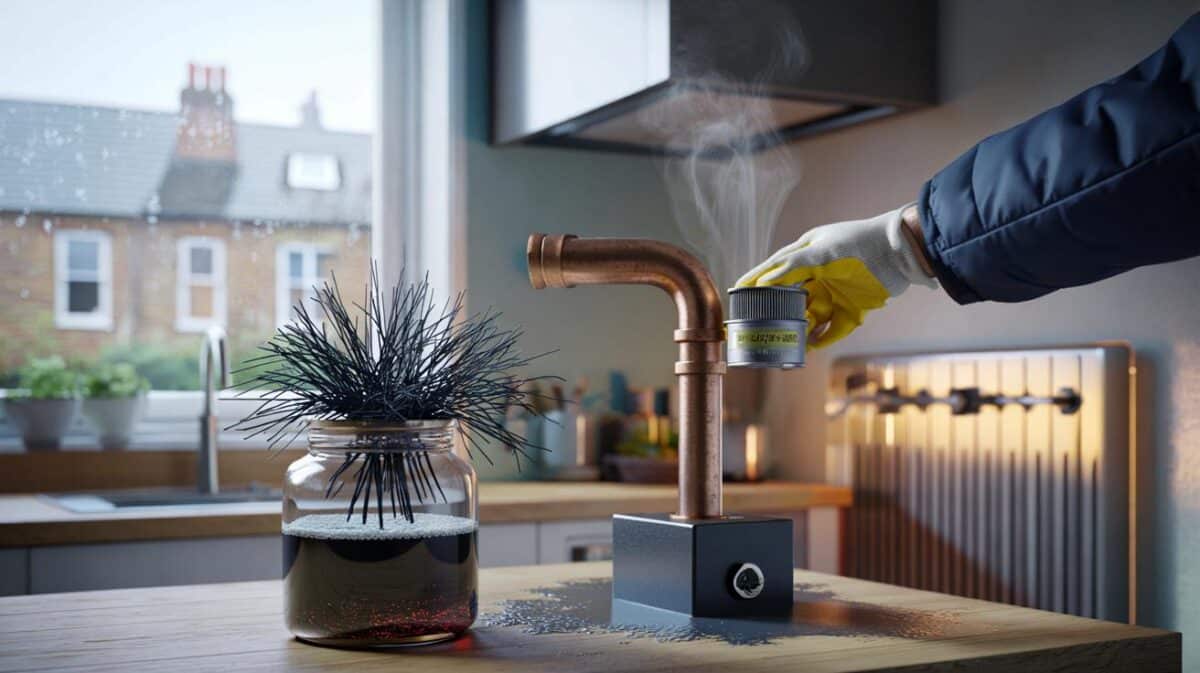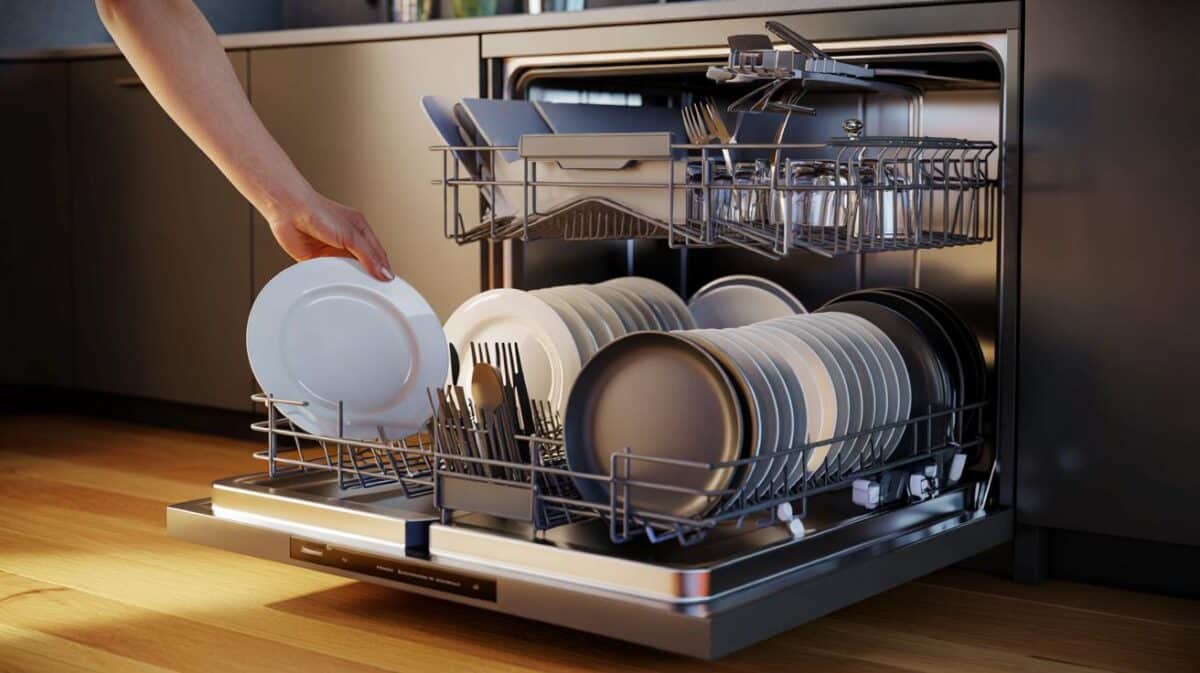The heating is off in the spare room, the box room, the hallway that smells faintly of paint. Morning light hits the glass and the windows bloom with tiny pearls of water. You mop them with a sleeve, tell yourself it’s fine, then spot the shadow blooming at the edge of the skirting. Mould loves a cold corner almost as much as it loves a busy house.
The couple who lived there had triaged their rooms: living room warm, bedrooms tepid, everything else wearing a jumper. The baby’s clothes dried on a horse by the boiler. The bathroom fan was a bit sulky, the kind that hums but doesn’t really try. Their windows misted by breakfast and cleared by lunchtime — unless the washing was on. The house felt honest and human and still the walls told a different story. A tiny black constellation above the window. A damp stripe behind the wardrobe. The quiet creep had started.
Why colder rooms get wet — and the one thing the air keeps trying to do
Condensation isn’t a mystery. Warm air holds more water, cool air holds less, and when warm, wet air touches a cold surface it dumps that water like a bag left too long in the rain. That’s your window pane, your outside wall, the back of a wardrobe against a chilly party wall. Heat off in one room, steamy shower in the other? The moisture travels to the nearest cold thing and throws itself at it. That’s why your unheated rooms fog up even if you never cook in them.
We’ve all had that moment when you open the curtains and the glass looks like it cried overnight. A shower can release up to a litre of water into the air. Drying one load of washing indoors can add another one or two. Kitchens puff steam from kettles and pans; even sleeping adults breathe out around 200 ml each across a night. In a home where the heating is zoned or rationed, that moisture goes on a little road trip — and it loves a cold destination with no airflow.
Here’s the dry logic. Condensation is about dew point: the temperature at which the air can’t hold all its moisture. Your rooms can sit at the same humidity but different temperatures, and the colder one hits dew point sooner. That’s why the hallway skirting gets speckled first. Unheated spaces also tend to have still air, so moisture lingers on surfaces. Add a “cold bridge” — a metal lintel, a single-glazed pane, a poorly insulated corner — and you’ve built a magnet for water. Moisture always moves from warm to cold.
Small moves, big results: nudge humidity down without heating every room
Start with the easy wins in the warm zones. Boil with lids on. Put the kettle under the extractor. Run the bathroom fan 15 minutes after a shower and keep the door closed while it runs. **Keep doors shut on cold rooms** when cooking or bathing so steam doesn’t wander in and kiss the coldest walls. If you can, crack a window or use trickle vents in the steamiest rooms, even for five minutes, to give moisture a way out that isn’t your skirting board.
Next, give the air a job. **Use a £10 hygrometer** to watch relative humidity. Aim for roughly 40–60% in lived-in rooms. If it’s sitting above 65% for hours, that’s a flag. A small desiccant or compressor dehumidifier in the landing can make a surprising dent, especially if you run it on a timer after showers and laundry. Dry clothes in one “wet zone” with the door closed, a window cracked, and a fan or dehumidifier pulling. Let’s be honest: nobody really does that every day. Try it twice a week and you’ll still feel the difference.
Furniture needs to breathe. Pull big wardrobes and sofas 5–7 cm off cold walls. Lift boxes off floors in unheated rooms. If a room stays unheated most days, open the door for an hour at lunchtime when the house is warmer; let a little warmth and movement pass through, then close it again by evening. **Dry laundry smarter, not hotter**: set an airer near a dehumidifier, or spin clothes at the highest safe RPM so less water enters the room in the first place.
The “wipe-and-watch” routine keeps condensation from graduating into mould. Each morning, squeegee wet windows and catch the water in a cup. Then run a microfibre cloth along the frames and sills. It takes two minutes and stops liquid from feeding the paintwork. If mould has already shown up in small patches, use a mild detergent solution and a disposable cloth on hard, non-porous surfaces. Rinse, dry, then increase ventilation in that spot for a week so spores don’t feel welcome again.
Common missteps are completely normal. Leaving the bathroom door open because the fan’s loud. Drying gym kit on radiators in the coldest room. Shutting trickle vents “to save heat” and accidentally trapping moisture. Don’t beat yourself up. Think of moisture as a busy guest: give it a quick exit and it won’t hang around making trouble. If a window always mists, that’s the one to open a crack right after showers. If a corner always spots up, create a little airflow there with a tiny desk fan on low for 30 minutes a day.
“Heat is expensive; airflow is cheap,” a damp inspector once told me on a bitter December morning. He also said the quiet truth few want to hear: mould is usually a lifestyle-plus-building dance, not a single villain. Below is a tiny checklist to pin on the fridge.
“Think like moisture: where would I go if I were warm, wet air looking for the nearest cold handshake?”
- Shower with the door shut; fan on during and 15 minutes after.
- Keep cold-room doors closed at steamy times; open them at drier, warmer hours.
- Run a dehumidifier near laundry or in a central hallway on a timer.
- Crack a window in the kitchen during cooking; lids on pans.
- Pull furniture 5–7 cm from cold external walls; check behind monthly.
Living with less heat, not more mould
There’s a rhythm to a home that isn’t fully heated. You start noticing the hours when the air feels drier, and you do the steamy jobs then. You learn which window makes the quickest difference for a five‑minute purge. You pick one or two daily micro-actions and let them become habit, not homework. The trick isn’t perfection. It’s gentle, repeatable moves that nudge humidity down and keep surfaces above that dew-point tipping point.
Some kit pays its way. A decent dehumidifier can pull half a litre to a litre during laundry day. Trickle vents don’t cost you a penny to run. PIV (positive input ventilation) units in the loft can help in stubborn homes, pressing in fresher, drier air and pushing the stale up and out. Not every landlord will fit one. Not every house needs it. Before you buy anything, spend a week taking simple readings with that little hygrometer. Your house will tell you its story if you listen.
And then there’s the human part. Share the load in the house: who’s on window duty, who runs the fan, who checks behind the wardrobe once a month. On bad weeks, just catch the windows and close the cold-room doors at shower time. On good weeks, rotate the furniture and set the timer on the dehumidifier. The mould doesn’t win in one night, and it doesn’t lose in one night either. Small, kind rituals keep the walls clear and the rooms liveable.
| Point clé | Détail | Intérêt pour le lecteur |
|---|---|---|
| Control moisture at the source | Lids on pans, longer fan run-on, door discipline during showers | Fewer grams of water entering the air means less condensation later |
| Measure, then manage | Track RH with a cheap hygrometer; aim for 40–60% | Turns guesswork into small, targeted actions that actually work |
| Create airflow around cold spots | Pull furniture off walls; short bursts of ventilation; use a dehumidifier | Raises surface temps and dries edges where mould starts |
FAQ :
- What humidity is “too high” at home?Consistent readings above about 65% RH indoors raise the risk of condensation and mould, especially in colder rooms.
- Is a dehumidifier cheaper than heating?Often, yes. Many draw 150–300W and can remove enough moisture to prevent the need for higher heat just to dry air.
- Should I leave windows on vent all night?Use short “purge” openings after steamy activities instead. In very cold weather, long openings can overcool surfaces and backfire.
- Can I clean small mould patches myself?For small, non-porous areas, use detergent and water, wipe, rinse, and dry. If growth keeps returning or covers large areas, call a professional.
- Does anti-mould paint fix the cause?It can slow regrowth on a cleaned surface, but it doesn’t remove moisture. Pair it with better ventilation and source control.








